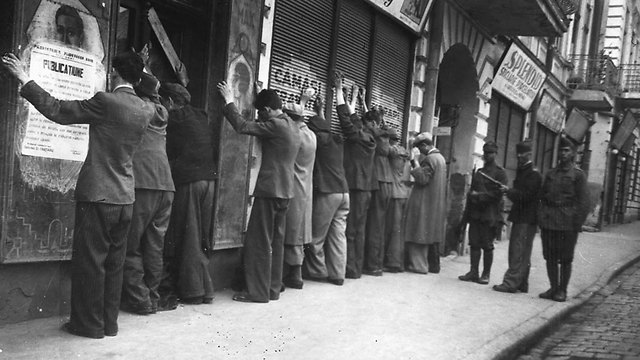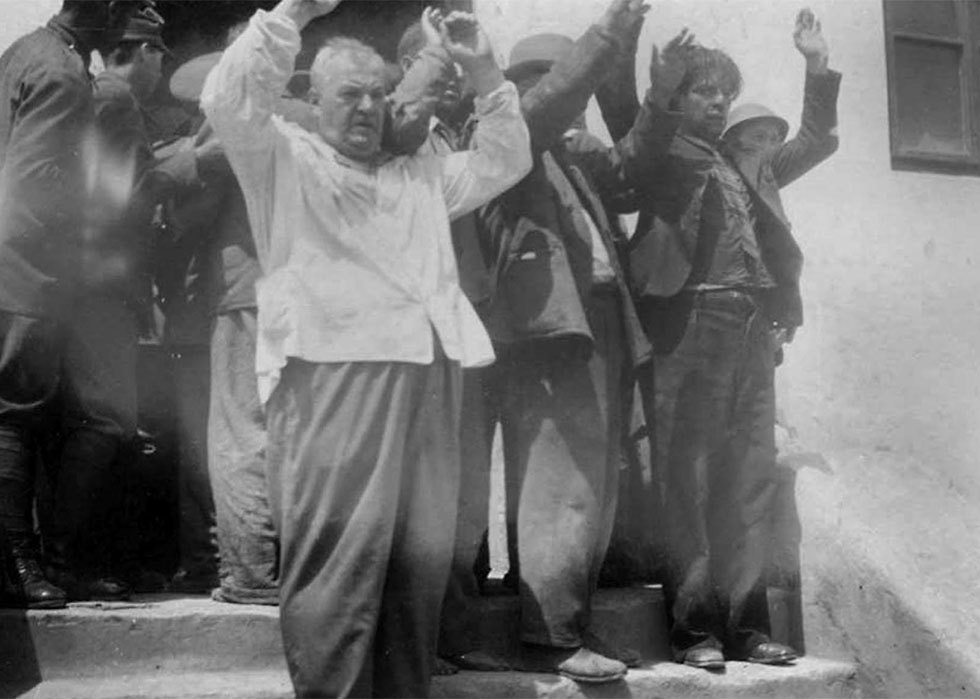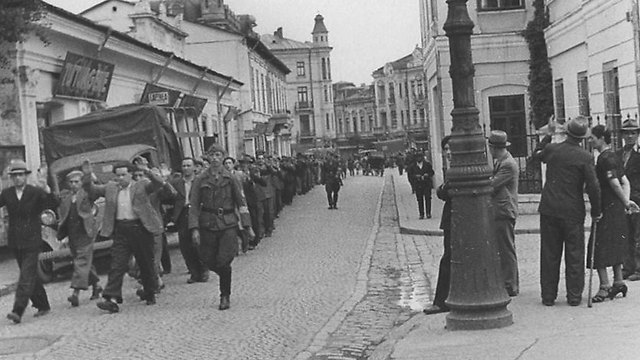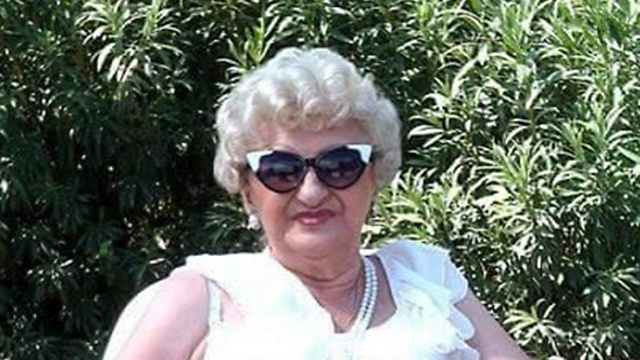
Survivors of death trains, ghetto and porgroms in Romania finally recognized
Jews who survived the pogroms in the city of Iași, which claimed the lives of some 15,000, will be eligible for reparations for the first time, Claims Conference says; 'It's a mitzva to take every penny, they took enough,' says one survivor.
Some 15,000 Jews were murdered in the pogroms in Iași in 1941. Some of those who survived the pogrom were forced to board train cars, where they were locked for days. As the train made its way slowly from town to town, many of the Jews died of suffocation, dehydration and having lost their minds.
The Jews who remained in Iași, which is in northeastern Romania, had to live under curfew inside an open ghetto in a designated part of the city. They were under constant threat of being expelled to labor camps and suffered violence and cruelty at the hands of both German and Romanian soldiers.

In addition to monthly stipends for the survivors from Iași, who haven't received any reparations so far, the Claims Conference has recently negotiated with Germany additional benefits for Holocaust survivors.
Among these benefits is an increase in the 2018 budget for nursing care at home for survivors from $399 million to $462 million.
Furthermore, the requirements have been eased for eligibility for stipends among survivors who had to hide or live under a false identity during World War II. So far, only those who lived under these conditions for six months or more were eligible for reparations, but now some 1,000 additional survivors who lived under these conditions for 4-6 months will be eligible as well.
Finally, those who received a one-time payment at a lower sum than what is paid today will be eligible for payment from the Claims Conference.

According to the Claims Conference, since 1952, Germany has paid $70 billion in direct compensation to some 600,000 Jewish Holocaust survivors across the world. Some 40 percent of that sum (about $28 billion) were paid to survivors living in Israel. These reparation payments continue to this very day.
'They've taken enough, taking from them is a mitzva'
One of the survivors from Iași is 83-year-old Koka Palmon. "Without the help of the Romanians, the Germans wouldn't have known where the Jews were hiding, and they (the Romanians) enjoyed carrying out these pogroms. If they hadn't cooperated, the killing would not have been to this extent," she told Ynet. "The Romanians are the one who set the flames using German hands, and it is a mitzva to take every penny. They took enough, they looted and killed, so we shouldn't be acting like we're asking for charity."
Palmon, who was born in 1934 in Iași, told her story for the first time a year ago, when she was crowned the runner up in the Holocaust Beauty Queen contest. It was only then, with a microphone in her hand and facing an audience of dozens of people, including members of her family, that she first recounted the horrors she had endured.
"I didn't say anything (before) because I didn't want to remember, and I didn't want to hurt my children. But since I started talking about it, I've been giving talks and lectures on it," she said.
The day the pogroms started, she recounted, her father left home to open up the family-owned restaurant, so Palmon's mother went to look for her husband.
"They hid him there, but the property owner decided if she couldn't hide her own husband, then my mother couldn't either. And so people were taken out of the basement where they were hiding, and my father had to go to the police station," Palmon said.
"On the way there, the policemen hit him with a rubber baton. They hit and shot other people too. My father, who was quick, ran and made his way through the crowd, and then lied down on a pile of dead people, playing dead himself," she continued, visibly emotional.
The next day, she said, "the order came to take everyone who lived to a stock rail car, and they closed the cars with bars so there wouldn't be much air left," she added with a pained look on her face. "My father would urinate into his hand and drink it. That's how he survived."
Her father also tried to trade his gold wedding ring for some water, "but the soldier took the ring and brought the water to the window, out of reach for my father, and when my father asked for the water, the soldier shot his hand, and the bullet went right through," Palmon went on to say.

"When my father returned home, he looked like a scarecrow. I didn't recognize him and fled from him. For a while, after he recovered, he was taken to do hard labor, as did my mother, and I would go with her," she recounted.
"When the Russians started bombing, a bomb fell right on our house and we lived for half a year inside a basement with no food or water. When my mother took me out to get bread, I remember an SS officer walked by us and punched me hard right where my yellow Star of David was, and I fainted. People started gathering around him, and he fled, because he was afraid he'd be lynched," she continued. "These stories are just part of my suffering in life."
After miraculously surviving the Holocaust, Palmon made aliyah to Israel, where she lived with her family at the height of the austerity period. She now has four children, four grandchildren and two great-grandchildren.
"You can't quantify the suffering of survivors who lived in fear they would be caught or exposed as Jews, which meant an immediate death sentence," said Claims Conference chief Greg Schneider. "The survivors who lived under these conditions, even for a few months, deserve the recognition these payments bring with them."
"The horrors experienced by the Jews of Iași have finally been recognized, after more than 70 years," added the head of the Claims Conference's negotiations team, Ambassador Stuart Eizenstat. "These survivors went through incomprehensible suffering and, for those who are still with us, we were able to achieve a certain measure of justice after all of these years."











